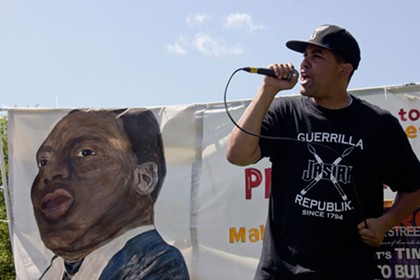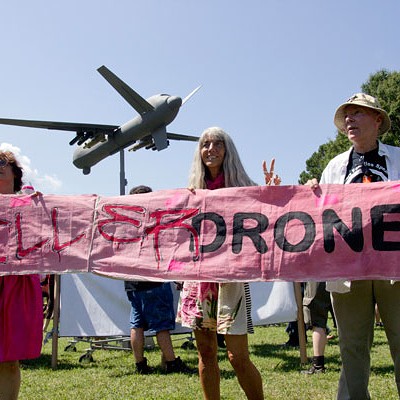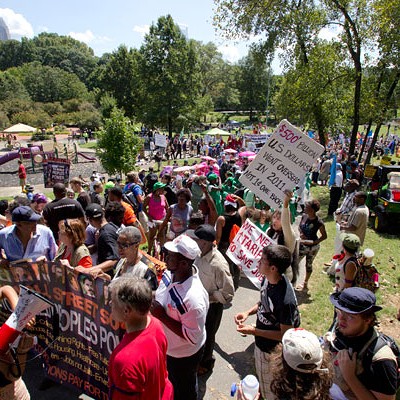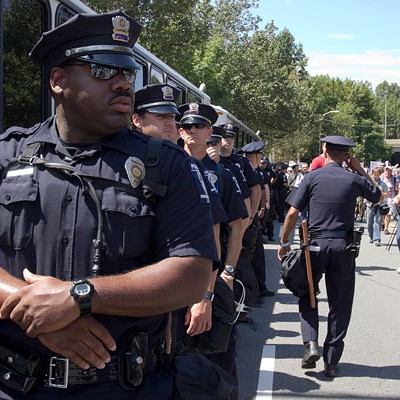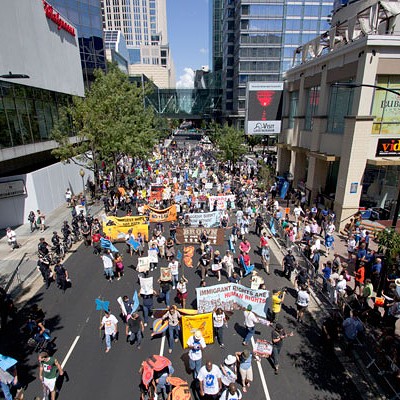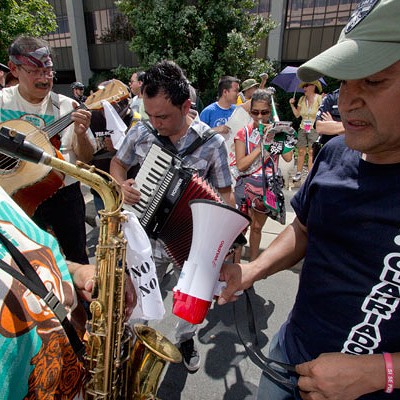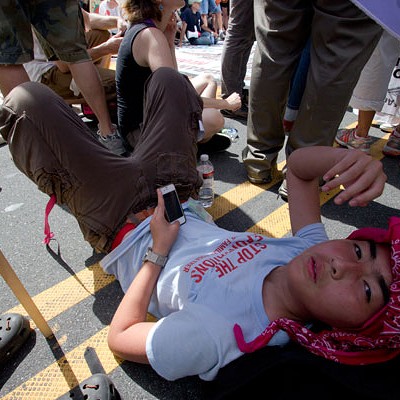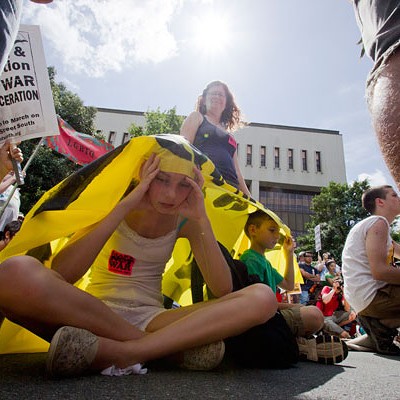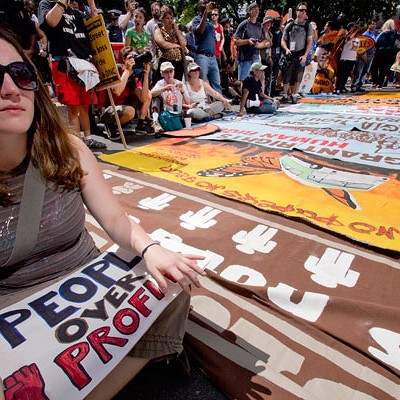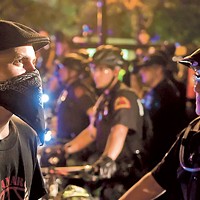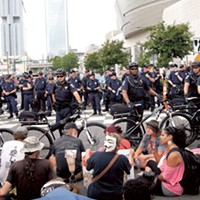After spending nearly five hours under an unforgiving sun, protesters hardly looked exhausted. Cops shook each others’ hands. No bombs, bullets or flying bottles of poop. All in all, just two arrests.
The March on Wall Street South, the largest planned protest for the Democratic National Convention, was by most accounts a rousing success.
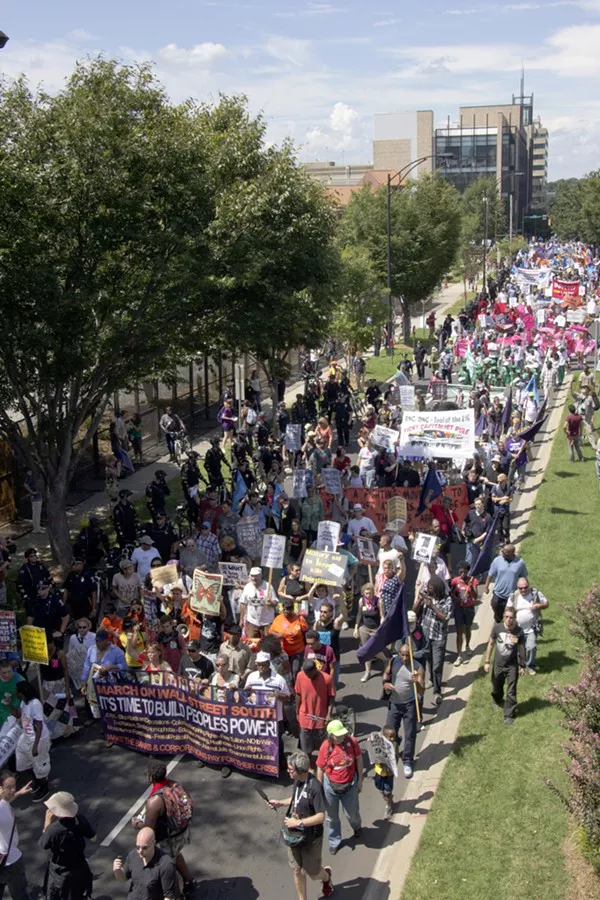
- Grant Baldwin
- March on Wall Street South. By our estimation, a shitload of people showed up.
“I’m incredibly happy with how things turned out,” said local organizer and occupier Michael Zytkow toward the end of the march, as the group approached Frazier Park, where the day had begun with a festival.
Not but fives minutes later, Charlotte Mecklenburg Police Department Major Jeff Estes turned around to a group of journalists walking ahead of the group, threw up his right thumb and said, “Peaceful, eh?”
Aside for a few f-bombs, peaceful it was. The crowd, about 1,000 deep, marched the entire three-and-a-half mile route through Uptown, stopping in front of Duke Energy and Bank of America’s headquarters to speak out mostly against the companies’ environmentally unfriendly practices and large donations to political campaigns. An army of policemen from Charlotte, other parts of North Carolina, Virginia, Georgia and Washington, D.C., straddled the crowd the entire time and alternated between wheels and feet. They never used the intimidating billy clubs on their belts, though they were hardly the smiling officers local activists saw outside this year’s Bank of America shareholder meeting protest.
Local occupiers, including Zytkow, and CMPD officials should be credited for Sunday’s generally peaceful atmosphere. Zytkow and his fellow occupiers had been on the phone with CMPD for months leading up to the march, emphasizing that they planned to keep things peaceful, without the civil disobedience seen at some protests. Barious community-wide discussions about safety during the DNC revealed that local police weren’t scared of local activists — they were worried about the “others” — more confrontational protesters who had thrown poop-filled water bottles and other “weapons” into crowds at demonstrations around the U.S.
The “others” never showed up on Sunday.
And, it was hard to tell that the "extraordinary events" ordinance, another point of contention for local activists and law enforcement, was even in effect. Earlier this year, Charlotte City Council passed the ordinance that bans from some public events water bottles and face-covering apparel — anything that rowdy protesters have previously used as either weapons or shields — and allows police to search anyone carrying a backpack. CMPD spokespeople had been promising for months that they wouldn’t take the ordinance literally and instead use discretion to determine if someone was actually going to use the innocuous items on the list of “weapons.” But the public was skeptical, especially of the non-CMPD officers — the “others” — expected at the protests. Police hardly bothered anyone who showed up in scarves or with backpacks.
One woman in a mask was arrested after someone notified police that she was carrying a knife. A man not affiliated with the protest was arrested for drunk and disorderly conduct.
The biggest concern on Sunday was making sure everyone stayed hydrated.
How did the march compare to ones of yore, particularly Denver’s DNC and Tampa’s recent Republican National Convention?
Charlotte’s was larger than Tampa’s, said a few who attended both. Much to the envy of their local counterparts, cops in Florida got to wear shorts. Denver’s in 2008 was bigger, but, as one activist put it, “quality is always preferable to quantity in these situations.”

